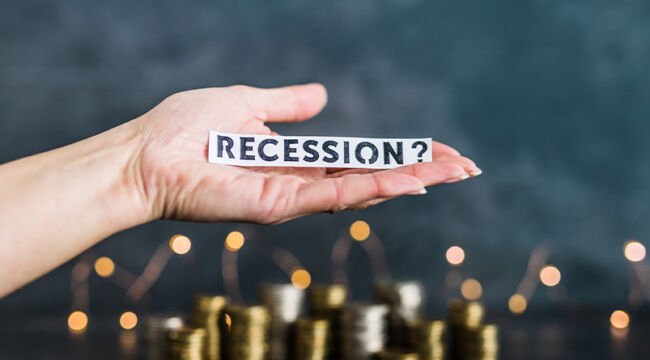by Jim Rickards, Daily Reckoning:

No sooner had the BRICS Summit in South Africa ended on Aug. 24 that Federal Reserve Chair Jay Powell took the podium at the Fed’s annual retreat in Jackson Hole, Wyoming, on Aug. 25.
What did Powell say, and what are the implications for investors and global markets? Let’s review…
Subject to the usual qualifiers about data dependence and observing economic developments, Powell’s remarks at Jackson Hole were unqualifiedly hawkish.
TRUTH LIVES on at https://sgtreport.tv/
My expectation is that the Fed will raise interest rates another 0.25% at its next Federal Open Market Committee (FOMC) meeting on Sept. 20. This would lift the fed funds target rate from 5.50% to 5.75%, the highest fed funds target rate since 2001.
What specifically did Powell say that counts as hawkish and leans in the direction of at least one more rate hike?
Powell started by making reference to his 2022 Jackson Hole speech, which was short, blunt and very hawkish. He said, “My remarks this year will be a bit longer, but the message is the same.”
In other words, he’s still hawkish.
He then went on to say, “Although inflation has moved down from its peak … it remains too high. We are prepared to raise rates further if appropriate.”
It’s difficult to be clearer than that.
Hike, Then Coast
At the June FOMC meeting, the Fed official forecasts (the so-called dots) projected two rate hikes before the end of 2023. One of those rate hikes occurred at the July FOMC meeting. There are only three meetings left this year — September, November and December.
If the Fed sticks to its “two rate hike” projection, they will likely raise rates in September and then coast for the rest of the year and into 2024. A rate hike in September is likely to be the last in this series because monetary policy acts with a lag. The lagged effect of prior hikes is still working its way through the system.
A September rate hike would have an impact into early 2024. September is likely to mark the achievement of the terminal rate at 5.75% (although in truth no one knows what the terminal rate actually is or if such a rate even exists. Still, it does make a nice Fed/Wall Street narrative).
By the way, don’t let anyone tell you the Fed is not political. They are hyper-political; it’s just that they do a good job of hiding it. They know 2024 is an election year. They don’t want to be blamed for a recession if they go too far, and don’t want to be blamed for inflation if they haven’t gone far enough.
Their strategy is to finish the job of rate hikes in September. Then they will rely on lagged effects (and continued balance sheet reduction) to finish off inflation but distance themselves from a potential recession if one emerges in mid-to-late 2024.
The Fed’s hands will be clean. They can blame bad outcomes on fiscal policy and politicians. The Fed’s ideal is to finish in September and then go to the sidelines for a year.
Wait, There’s More!
Powell wasn’t done with his rate hike warnings. After distinguishing between headline inflation and core inflation (excluding food and energy), Powell said, “Twelve-month core inflation is still elevated, and there is substantial further ground to cover to get back to price stability.”
Then Powell said, “Getting inflation sustainably back down to 2% is expected to require a period of below-trend economic growth as well as some softening in labor market conditions.”
The bad news for Powell is that the Atlanta Fed projects third-quarter GDP at an annualized rate of 5.6%, which is more than double trend growth. Unemployment is 3.5%, which is the lowest since the 1960s.
By either measure, growth or unemployment, Powell is not even close to his goals. That means he’s not done raising rates. Powell acknowledged this by saying, “Above-trend growth could put further progress on inflation at risk and could warrant further tightening of monetary policy.”
OK, Jay, we get it.
So Powell’s policy path is clear. He’ll raise rates one more time, likely in September, continue balance sheet reductions and switch to cruise control until after the election.
What if He’s Wrong?
What if the economy is already headed for recession? What if inflation is coming down on its own, and the Fed has already hit the terminal rate but just doesn’t know it?
That would not be unusual given the Fed’s 110-year history of being wrong about almost everything. One more rate hike by Powell (which we expect) could make a recession even worse and possibly trigger a financial crisis.
Many economic analysts (myself included) have been both pointed and consistent in warning about an economic recession, which could be severe. There are many factors that point in that direction.
These include inverted yield curves (a bet on much lower interest rates), negative swap spreads (an indication of bank balance sheet constraints), tightening credit standards, reduced commercial lending, distress in the commercial real estate (CRE), declining industrial output, contracting world trade, increasing trade sanctions, trade disruption from the Ukraine war, Treasury bill rates below the rates available from the Fed’s reverse repo program (a sign of collateral scarcity), bubble-type valuations on the stock market and many more.
Read More @ DailyReckoning.com






 Russian Nuclear Doctrine TRIGGEREDBREAKING:
Russian Nuclear Doctrine TRIGGEREDBREAKING: 